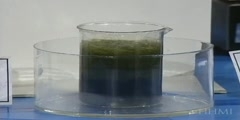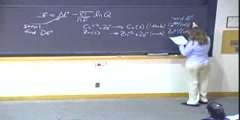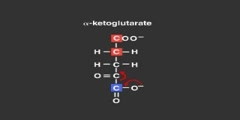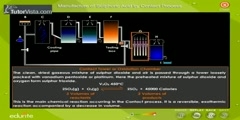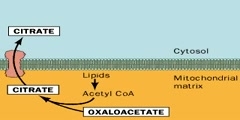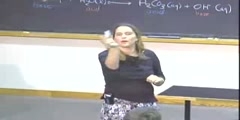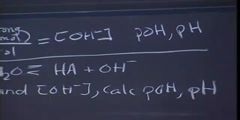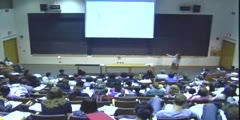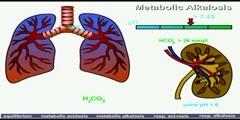Lec 34 - Sharpless Oxidation Catalysts and the Conformation of Cycloalkanes
"Lec 34 - Sharpless Oxidation Catalysts and the Conformation of Cycloalkanes" Freshman Organic Chemistry (CHEM 125) Professor Barry Sharpless of Scripps describes the Nobel prize-winning development of titanium-based catalysts for stereoselective oxidation, the mechanism of their reactions, and their use in preparing esomeprazole. Conformational energy of cyclic alkanes illustrates the use of molecular mechanics. 00:00 - Chapter 1. Introduction for Professor Barry Sharpless 02:52 - Chapter 2. The Reactivity of Allyic Alcohols and Vanadium-Catalyzed Epoxidations 11:44 - Chapter 3. Research with Katsuki and the Discovery of Combining Titanium with Tartaric Acid 21:10 - Chapter 4. The Mechanism for Asymmetric Epoxidation of Olefins and the Story of Nexium 41:05 - Chapter 5. The Conformation of Rings: Carvone and Cyclohexane Complete course materials are available at the Open Yale Courses website: http://open.yale.edu/courses This course was recorded in Fall 2008.
Video is embedded from external source so embedding is not available.
Video is embedded from external source so download is not available.
Channels: Chemistry (General)
Tags: Sharpless TBHP t-butylhydroperoxide titanium epoxidation allylic alcohol tartarate tartaric acid diethyl tartrate
Uploaded by: yalefreshorganic ( Send Message ) on 05-09-2012.
Duration: 49m 18s
Here is the next lecture for this course
Tartarate oxidation: colors and gases - c ...
06:09 | 13122 viewsLec 8 - Alcohol Oxidation (NB)
02:29 | 2551 viewsChemical Science - Oxidation Reduction (c ...
48:10 | 15829 viewsTricarboxylic Acid Cycle
07:57 | 33150 viewsOxidation and Reduction of Alcohols
10:45 | 6279 viewsCreation Of Sulphuric Acid By Contact Process
04:58 | 8742 viewsFatty Acid Biosynthesis
00:40 | 75604 viewsSmoking and Drinking Alcohol dangers on t ...
00:33 | 11471 viewsTitanium video - Periodic Table of Videos
08:31 | 6464 viewsVideo lecture: acid-base equilibrium
50:05 | 19966 viewsLecture on acid-base equilibrium part 2
48:13 | 8666 viewsLecture on acid base titration
50:04 | 23055 viewsVideo lecture: oxidation reduction
46:32 | 13181 viewsNurseReview.Org - Animation on Acid Base ...
00:27 | 26731 viewsCitric Acid Cycle or Krebs Cycle
00:00 | 15063 viewsNo content is added to this lecture.
This video is a part of a lecture series from of Yale
Lecture list for this course
Lec 2 - Force Laws, Lewis Structures and Resonance
Lec 3 - Double Minima, Earnshaw's Theorem and Plum-Puddings
Lec 4 - Coping with Smallness and Scanning Probe Microscopy
Lec 6 - Seeing Bonds by Electron Difference Density
Lec 7 - Quantum Mechanical Kinetic Energy
Lec 8 - One-Dimensional Wave Functions
Lec 9 - Chladni Figures and One-Electron Atoms
Lec 10 - Reality and the Orbital Approximation
Lec 11 - Orbital Correction and Plum-Pudding Molecules
Lec 12 - Overlap and Atom-Pair Bonds
Lec 13 - Overlap and Energy-Match
Lec 14 - Checking Hybridization Theory with XH_3
Lec 15 - Chemical Reactivity: SOMO, HOMO, and LUMO
Lec 16 - Recognizing Functional Groups
Lec 17 - Reaction Analogies and Carbonyl Reactivity
Lec 18 - Amide, Carboxylic Acid and Alkyl Lithium
Lec 19 - Oxygen and the Chemical Revolution (Beginning to 1789)
Lec 20 - Rise of the Atomic Theory (1790-1805)
Lec 21 - Berzelius to Liebig and Wöhler (1805-1832)
Lec 22 - Radical and Type Theories (1832-1850)
Lec 23 - Valence Theory and Constitutional Structure (1858)
Lec 24 - Determining Chemical Structure by Isomer Counting (1869)
Lec 25 - Models in 3D Space (1869-1877); Optical Isomers
Lec 26 - Van't Hoff's Tetrahedral Carbon and Chirality
Lec 27 - Communicating Molecular Structure in Diagrams and Words
Lec 28 - Stereochemical Nomenclature; Racemization and Resolution
Lec 29 - Preparing Single Enantiomers and the Mechanism of Optical Rotation
Lec 30 - Esomeprazole as an Example of Drug Testing and Usage
Lec 31 - Preparing Single Enantiomers and Conformational Energy
Lec 32 - Stereotopicity and Baeyer Strain Theory
Lec 33 - Conformational Energy and Molecular Mechanics
Lec 35 - Understanding Molecular Structure and Energy through Standard Bonds
Lec 36 - Bond Energies, the Boltzmann Factor and Entropy
Lec Last - Potential Energy Surfaces, Transition State Theory and Reaction Mechanism

